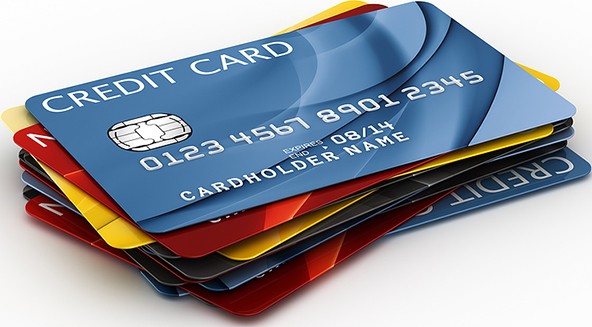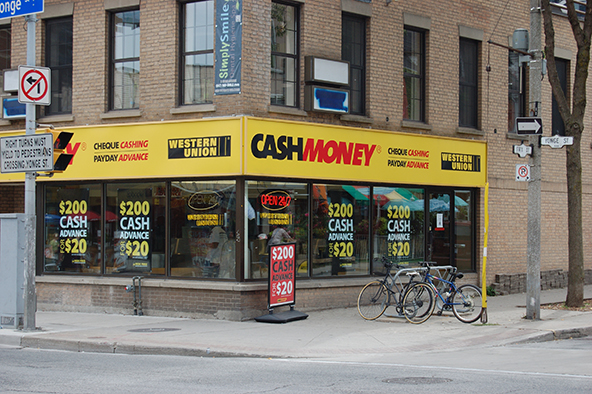Using a Credit Card Calculator to Compare How Much Interest You Will Pay for Any Given Length Of Payments
In this guide we are going to use a credit card calculator to compare how much interest an individual will pay on his or her credit card debt for any given length of payments. You can look for a credit calculator on the internet, where there are many options available, for example www.creditcards.com/calculators and www.creditkarma.com/calculators/debtrepayment. Of course, you can make the calculations without the help of any of these tools, but they are convenient.
Once we calculate the total amount of debt repayments for any given length of payments and interest rate, we will be better able to make an informed decision about which course of action best serves our financial interest.
Scenario 1: Using a Credit Calculator to Estimate Your Total Credit Card Debt
Let’s take a look at a hypothetical scenario: You have maxed out your credit card with a $2,000.00 limit in six months’ time. You have decided you will not use this credit card again until the total is paid off. Your interest rate on the credit card is 21 percent.
If you are making minimum payments (4%), how long will it take you to pay this credit card debt off? Eight years and four months. How much will it cost you in interest? $1,386.40. How much is your monthly payment? $80.00.
You decide that this is a long time and a lot of interest. You are paying over 50% in interest. You need to try and pay it all off faster. You are going to change the payment to 6%. How will this change things?
It will take five years and seven months to pay off the debt with payments of $120.00 a month and it will cost you $768.79 in interest. How much has this reduced the interest? $617.68.
Let’s suppose that you get a really good job and you say, “I can afford a larger payment, and I don’t like this credit card debt hanging over my head.” You decide you are going to pay 10% on the credit card.
How much is your monthly payment? $200.00. How long will you pay on the debt? Three years and five months. How much will you pay in interest? $408.79. How much will you save in interest compared to when you made the minimum payment of 4%? $977.68.
What conclusions can you come to from doing this comparison? Making more than the minimum payment can shorten the loan term considerably and reduce the amount you are spending in interest.
Most people do not stop charging on their credit cards. What would happen if you continued to charge on the card when you paid it below the credit limit? You would never pay off the credit card and the amount you pay in interest would continue to increase.
What might you conclude about the use of credit cards? The borrower should attempt to pay the credit card balance in full at the end of each monthly cycle or, failing that, pay it off as quickly as possible.
Scenario 2: Using a Credit Calculator to Estimate Your Total Car Debt
Of course, a credit calculator can be used to make financial decisions about all types debt repayment, not just credit card, so let us apply it to, say, car loans.
In this scenario, we are going to use a credit calculator to compare how much we pay in interest and the length of the payments. Once again, you can choose one of many web-based credit calculators, including the ones mentioned at the beginning of this article or this one. Of course, you don’t really need one to make the calculations, but it is a useful utility.
You will create the following chart, which compares interest rates and lengths of loans. Let’s assume that you are purchasing a new car and you are going to borrow $25,000.00 for it. We will now compare loans for four years, five years and six years.
As we know that consumers with higher credit scores get lower interest rates, we will compare three-percent interest with five-percent interest. Complete the chart below and then answer the questions that follow.
| Loan Amount | Length of Loan | Rate of Interest | Payment | Interest Paid |
| $25,000.00 | four years | 3% | $553.36 | $1561.19 |
| $25,000.00 | five years | 3% | $449.22 | $1953.04 |
| $25,000.00 | six years | 3% | $379.84 | $2,348.62 |
| $25,000.00 | four years | 5% | $575.73 | $2,635.15 |
| $25,000.00 | five years | 5% | $471.78 | $3,306.85 |
| $25,000.00 | six years | 5% | $402.62 | $3,988.88 |
How much can you save in interest by buying a car on a:
- Four-year loan at three percent interest versus a five-year loan? $391.85.
- Four-year loan at three percent interest versus a six-year loan? $787.43.
If you can save so much in interest by using a four-year loan, why would someone want to buy on a six-year loan? He or she cannot afford the larger payment of a four-year loan.
Now let us compare the payment of the three-percent interest rate versus the five-percent interest one. Are your payments on the five-percent loan higher or lower than the three-percent loan? Higher.
How much more in interest will you pay on the six-year loan at five percent than the six-year loan at three percent? $1,640.26.
What could you buy with the amount of money in the previous questions? Answers will vary.
Now here is a homework for you: Write a paragraph about what you can conclude from this exercise. Answers, again, will vary, but might include this one: People with mediocre or poor credit will almost always pay more in interest, which means they will have less spendable income.
To maximize your income, be sure to pay your bills on time so you can enjoy lower interest rates and have more money.
Scenario 3: Using a Credit Calculator to Estimate The Cost of Minimum Card Payments
For this exercise, we can use the Credit Card Minimum Payment Calculator from http://www.bankrate.com/calculators/credit-cards/credit-card-minimum-payment.aspx.
Let’s start with inputting the following data into the online calculator: $1,000 credit card balance, 18% credit card interest rate and 3% (of the outstanding balance) minimum payment. Then we calculate the balance pay-off time and total payments in the first table. Then we repeat the process with balances of $5,000, $10,000 and $20,000.
Next, let us input the following data into our online calculator: $1,000 credit card balance, 18% credit card interest rate and 6% minimum payment. Then we calculate the balance pay-off time and total payments in the second table as well as the interest savings vs. payments shown in Table 1 below.
Then, once again, we repeat the process with balances of $5,000, $10,000 and $20,000. Here is what we get:
Table 1: Making Minimum Payments: 3% of the Outstanding Balance
| Outstanding Balance | Total Payments | Balance Payoff (Months/Years) |
| $1,000 | $1,698.38 | 92 months/7.67 years |
| $5,000 | $9,698.44 | 198 months/16.5 years |
| $10,000 | $19,698.16 | 244 months/20.33 years |
| $20,000 | $39,698.45 | 290 months/24.17 years |
Table 2: Making Double the Minimum Payment: 6% of the Outstanding Balance
| Outstanding Balance | Balance Payoff (Months/Years) | Total Payments | Savings vs. Making 3% Minimum Payments |
| $1,000 | 49 months/4.08 years | $1,289.87 | $408.51 |
| $5,000 | 84 months/7 years | $6,623.22 | $3,075.22 |
| $10,000 | 99 months/8.25 years | $13,289.85 | $6,408.31 |
| $20,000 | 114 months/9.5 years | $26,623.18 | $13,075.27 |
Now write a paragraph about what you can conclude from this exercise. Answers, again, will vary, but might include the recognition that both repayment time and interest costs are reduced by making a larger monthly payment and that the difference between the 3-percent and 6-percent (of balance) repayment strategies is especially magnified for large outstanding balances.
Scenario 4: Using a Credit Calculator to Estimate The Cost of Student Loan Payments
Here we can use the PrePayment Calculator for student loan debt by FinAid: http://www.finaid.org/calculators/prepayment.phtml. Let us begin with covering the basics.
What is principal prepayment?
Principal pre-payment is the process of making extra payments to reduce the principal balance of a loan such as a home mortgage or student loans. Principal pre-payment reduces the amount owed (i.e., the loan balance), resulting in a loan being repaid in less time than was originally scheduled.
The total cost of interest payments is also reduced in the process. Some people prepay principal on a regular basis as part of their household budget and some use large, irregular lump sums such as cash gifts or income tax refunds.
What are the advantages of principal pre-payment?
Big advantages include time and interest savings. Many people also use principal pre-payments as part of an overall financial planning strategy. For example, they prepay principal to pay off their mortgage before they retire or before their children go to college.
What are the disadvantages of principal pre-payment?
Prepaying principal requires a larger loan payment that would otherwise be the case. This entails reduced spending in other areas of an individual’s or family’s budget.
Another disadvantage is that someone might forgo the opportunity to use the money allocated for principal prepayment for another purpose such as making deposits into a mutual fund investment. This is known as an opportunity cost.
Now let’s assume that Jane borrows $35,000 for student loans at an interest rate of 4% with a loan term of 10 years and ask how much she will pay monthly and in total, without any extra principal pre-payments.
After a simple calculation, we find that the answer is that Jane will make 120 payments of $354.36 for a total of $42,877.26 in payments, $7,877.26 of which is interest.
But what if Jane borrows the same $35,000 for student loans at an interest rate of 4% with a loan term of 10 years, how much will she pay monthly, and in total, with a $100 monthly principal pre-payments?
After a calculation, we find that Jane will make 90 payments for a total of $40,517.11, $5,517.11 of which is interest.
Now, what if Jane borrows the same $35,000 for student loans at an interest rate of 4% with a loan term of 10 years, how much will she pay monthly, and in total, with a $300 monthly principal prepayment?
The answer turns out to be that Jane will make 60 payments for a total of $38,613.08 in payments, $3,613.08 of which is interest.
How can Jane find the extra money needed to prepay the principal on her student loans? Well, Jane can try to find ways to increase her income, reduce her expenses, or do both.
For example, she might be able to earn extra money by freelancing her work-related skills as a consultant, finding a second job, or working overtime.
To reduce expenses, she can look for ways to save money for various types of variable household expenses. For example, she might use coupons to save on food shopping, shop for clothing at a thrift shop, and turn down the thermostat to reduce utility costs.
Scenario 5: Using a Credit Calculator to Estimate The Cost of Mortgage Payments
For this exercise, we can use the Mortgage Prepayment Calculator from http://www.hsh.com/calc-prepay.html.
For Table 1 below, we use $100,000 for the mortgage loan amount, 30 years for the loan term, 3.5% for the interest rate and 15 years for the desired length of the loan.
Now we calculate the standard monthly payment (principal plus interest), the extra payment per month and the interest saved. Then we do the same calculation for 20 and 25 years and compare results.
Table 1: Principal Prepayment on a $100,000, 30 Year, 3.5% Mortgage (By Desired Length of Loan)
| Loan Term | Standard Monthly Payment
(Principal plus Interest) |
Extra Payment Per Month | Total Payment (Standard Payment Plus Extra Payment) |
Interest Saved by Prepaying Principal |
| 15 Years | $449.04 | $268.88 | $717.92 | $33,148.20 |
| 20 Years | $449.04 | $132.59 | $581.63 | $22,644.92 |
| 25 Years | $449.04 | $52.62 | $501.66 | $11,655.82 |
Once again, answers will vary, but should include the conspicuous fact that the shortest term mortgage (15 years) has the greatest interest savings and the highest total payment because the $100,000 loan amount is being spread over 180 payments versus the originally scheduled 360 payments (30 years).
For Table 2, we enter the same loan amount, loan term and interest rate and $500 for the desired monthly payment. Now we use the calculator to determine the standard monthly payment (principal plus interest), the extra payment per month, interest saved, and time to pay off the loan.
Then we do the same calculation for $600, $700 and $800 monthly payments and enter the results in the table below.
Table 2: Principal Prepayment on a $100,000, 30 Year, 3.5% Mortgage (By Desired Monthly Payment)
| Desired Monthly Payment (Standard Payment plus Extra Payment) | Standard Monthly Payment | Extra Payment per Month | Interest Saved by Prepaying Principal | Time to Pay Off Loan |
| $500 | $449.04 | $50.96 | $11,356.80 | 25 Years, 1 Month |
| $600 | $449.04 | $150.96 | $24,502.33 | 19 Years, 1 Month |
| $700 | $449.04 | $250.96 | $32,108.31 | 15 Years, 6 Months |
| $800 | $449.04 | $350.96 | $37,093.01 | 13 Years, 0 Months |
In this case, too, answers will vary but might reasonably include the obvious fact that, the higher the amount of the principal pre-payment, the greater the amount of interest saved by prepaying principal and the shorter the time required to pay off a mortgage loan.
Even an extra $51 a month added to the required principal plus interest payment will save over $11,000 in interest and almost five years of payments.
Conclusion
While interest can be our best friend (when we earn interest on savings accounts), it can also be our worst enemy (when we pay interest on loans, such as credit cards). The amount of interest that a borrower pays depends on three key factors: the amount of money borrowed, the length of the loan, and the interest rate itself.
All the calculations above clearly illustrate how interest charges increase the cost of goods and services. It is therefore important to keep spending under control, so that the amount owed (our debt) does not exceed our ability to pay it back. As a useful rule of thumb, the total monthly payments for consumer debt should not exceed 20% of the monthly net (i.e., take-home) income.
Asking whether something is a need or a want can help us prioritize spending and keep credit card debt (and, to a lesser extent, other types of debt) in check. Of course, answering such a question is not quite as straightforward as we might wish.



